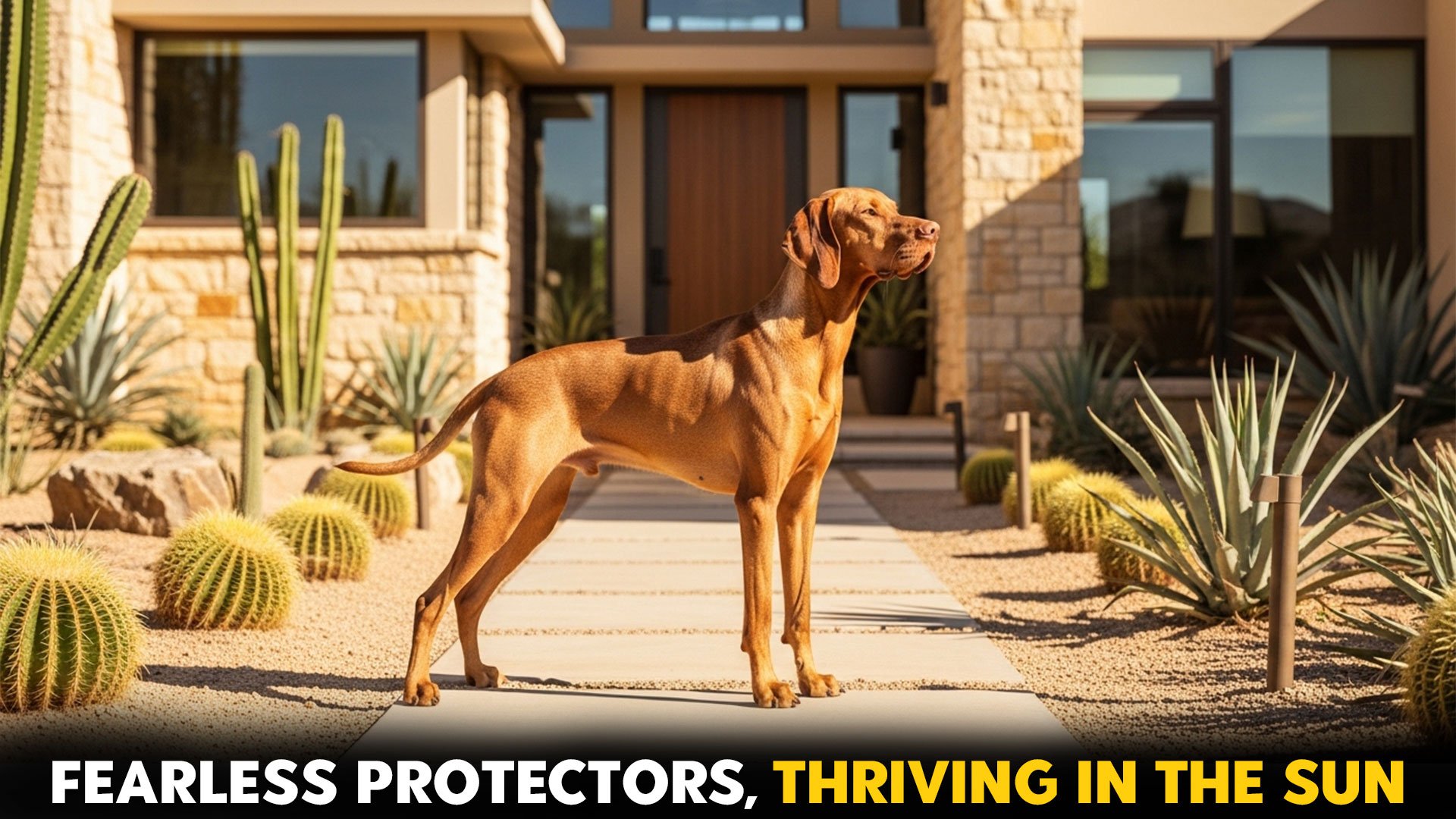Did you know that dogs don’t sweat like humans do? According to a study, they primarily cool down by panting — a fascinating adaptation that helps them regulate body temperature even in scorching heat and hot climates. Yet, not every breed handles the sun the same way.
In the dazzling shimmer of summer, some dogs seem to thrive where others wilt. Their sleek short coats, lean builds, and desert-born ancestry give them a natural edge against rising temperatures.
Imagine a loyal guardian who can chase off intruders under the blazing afternoon sun without breaking a sweat — literally. These remarkable canines combine courage with climate resilience.
From sunbaked ranches to tropical backyards, heat-tolerant dogs bring both protection and companionship. Their energy never fades, even when the mercury soars.
Let’s journey into the world of guard dogs built for warmth and wonder — guardians who wear the sunshine like a second skin.
Best Guard Dog Breeds For Warm Regions
1. Australian Cattle Dog
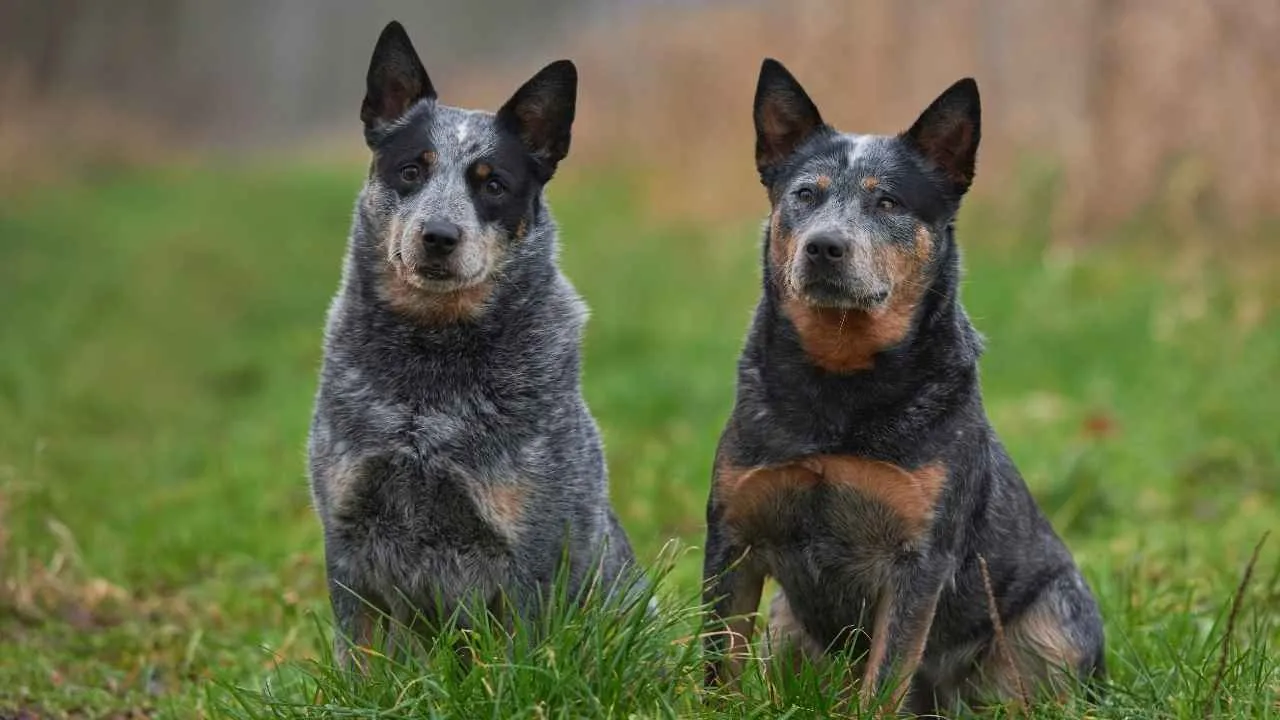
Bred in the blazing Australian outback, the Australian Cattle Dog is a natural-born heat warrior. Its roots trace back to the 19th century, where ranchers needed a tough, intelligent herder to manage cattle in harsh sun and dust.
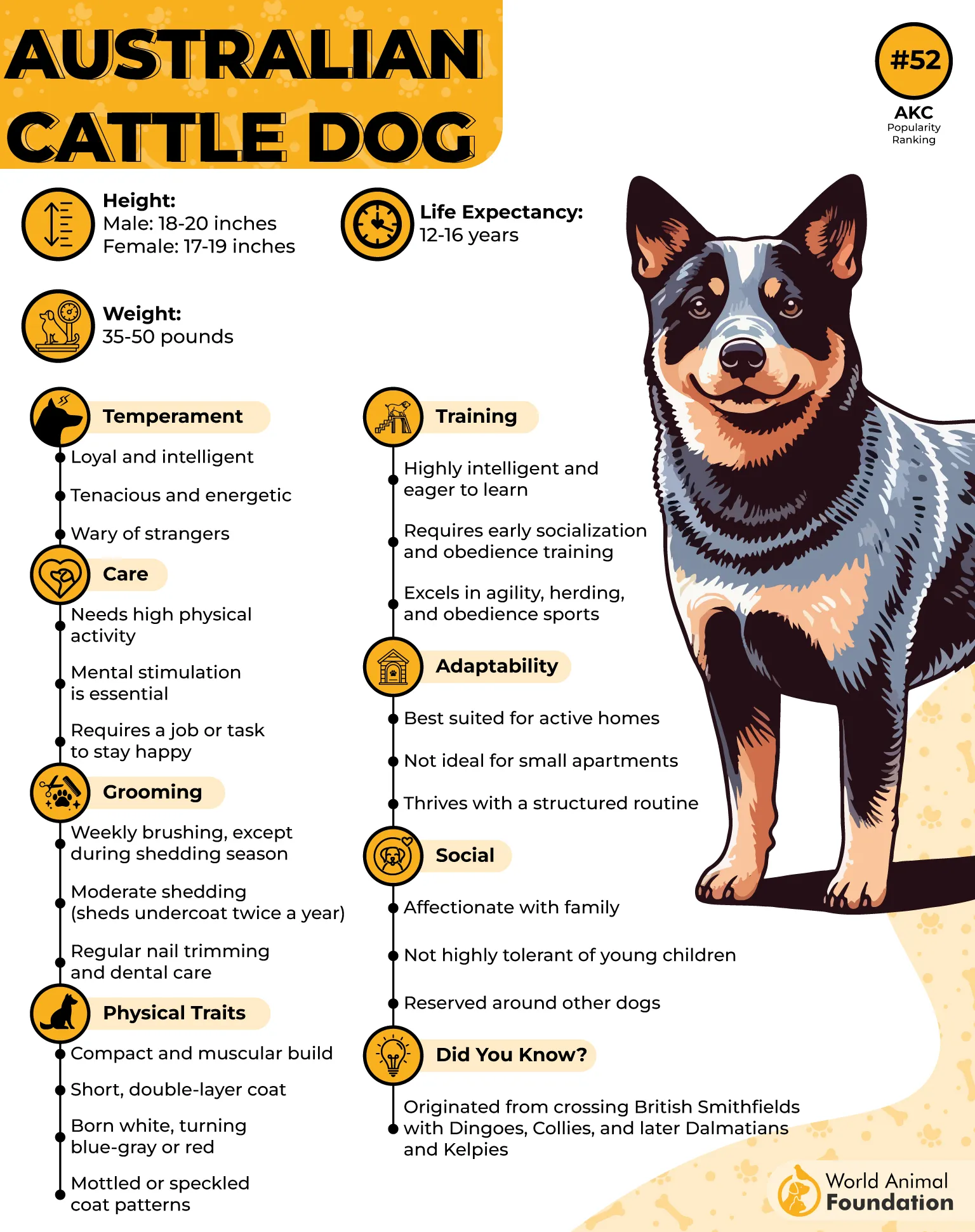
Developed in the sun-drenched Australian outback, naturally bred for heat tolerance.
Short, dense double coat reflects sunlight and prevents overheating while offering light protection.
A lean, muscular build promotes efficient heat dissipation during activity.
Typically active early morning and evening, instinctively avoiding midday heat.
High intelligence allows it to self-regulate and seek shade or water when hot.
Compact and muscular, the Cattle Dog exudes alertness and grit. Beneath its speckled blue or red coat lies a powerhouse of stamina and loyalty. Known for its fierce devotion, this dog is protective yet deeply affectionate toward its family, according to AKC.
Care & Health Tips for Warm Regions:
Provide shaded outdoor areas during midday heat.
Brush regularly to manage the undercoat.
Ensure ample hydration after activity.
Always ready for action, this dog craves daily challenges — both mental and physical. Its high intelligence means it responds well to positive, consistent training, turning energy into excellence.
2. Vizsla
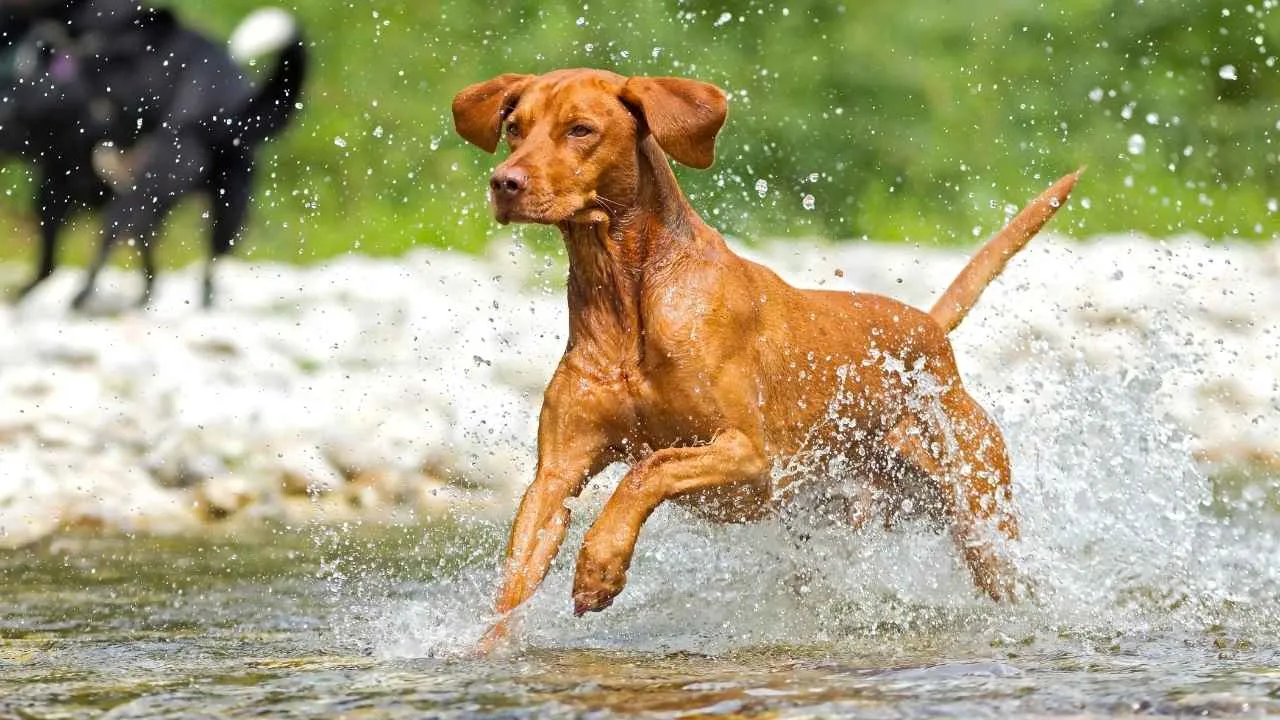
Hailing from Hungary’s sun-drenched plains, the Vizsla was bred to accompany hunters on long, warm days. Its lean frame and short, golden-rust coat are tailor-made for hot climates, allowing it to glide through summer without overheating.
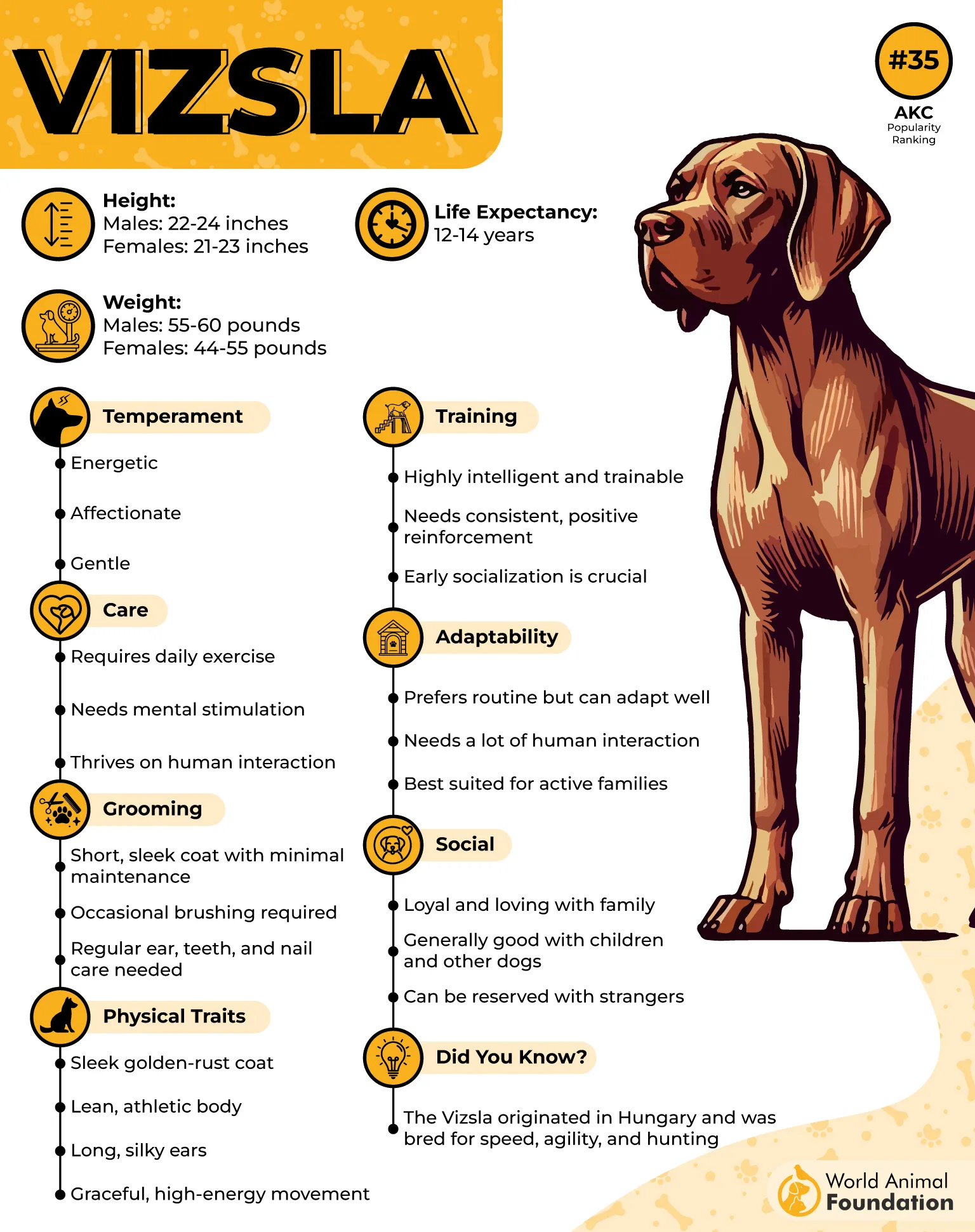
Originates from Hungary’s warm plains, naturally suited for hot weather conditions.
Short, smooth single coat minimizes trapped heat and helps with airflow across the skin.
Lean, athletic frame supports endurance without overheating.
Light coat color reflects sunlight, keeping body temperature balanced.
Prefers moderate exercise and water breaks to maintain hydration in high temperatures.
PDSA claims that this breed radiates warmth both in color and spirit. Graceful yet powerful, the Vizsla forms an unshakable bond with its humans. It’s a velcro dog — affectionate, intelligent, and loyal enough to guard with heart rather than aggression.
Care & Health Tips for Warm Regions:
Apply dog-safe sunscreen to exposed skin areas.
Maintain hydration during outdoor exercise.Avoid prolonged pavement walks in high heat.
The Vizsla’s boundless energy makes it a natural athlete. Its trainability shines through structured activities like agility or tracking, where focus and enthusiasm meet in perfect balance.
3. German Shorthaired Pointer
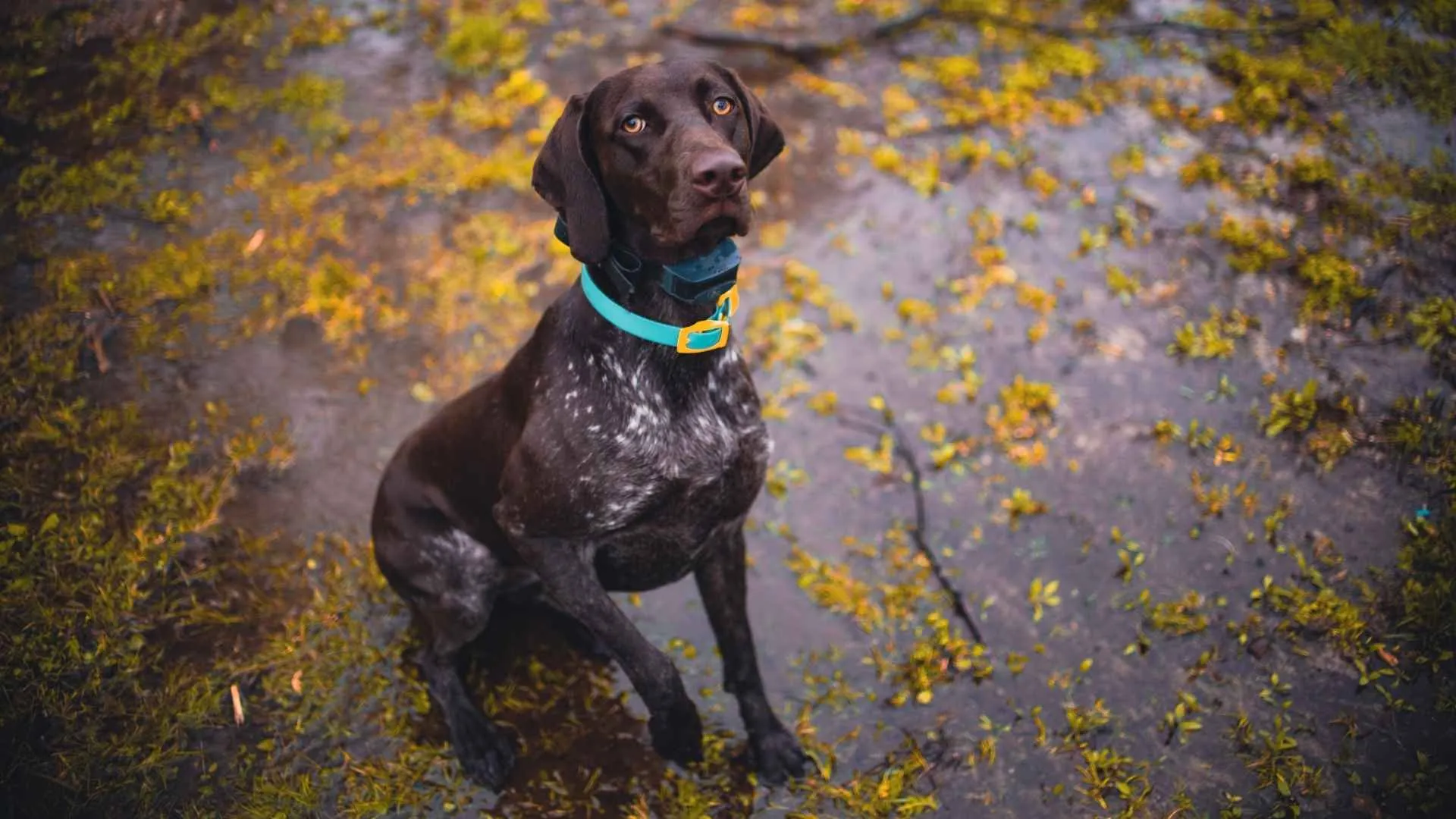
This versatile breed was crafted in 19th-century Germany for all-weather performance, but its short coat and athletic build make it a star in warmer zones. The German Shorthaired Pointer (GSP) adapts effortlessly to hot days, thanks to its sleek coat and high endurance.
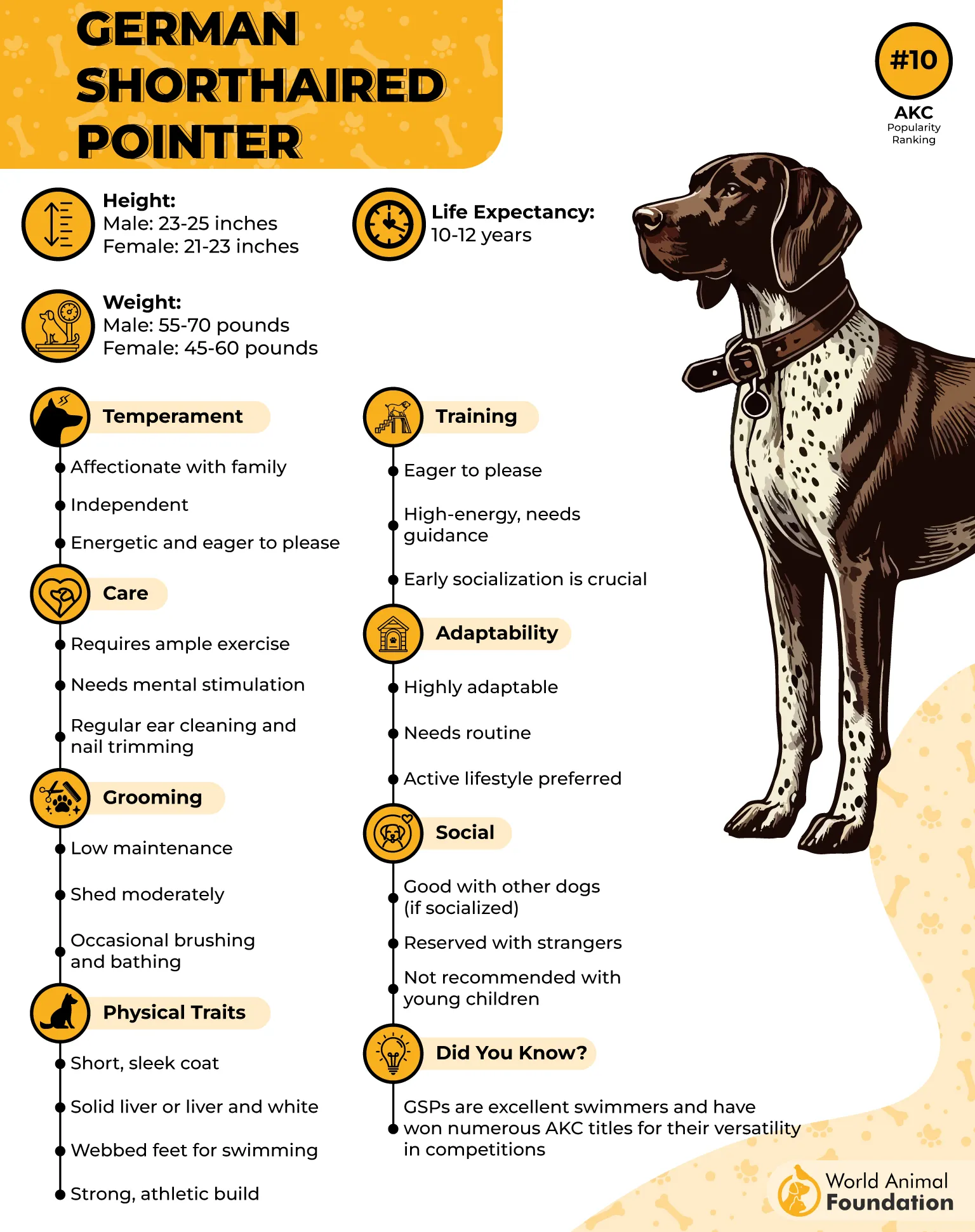
Bred for long hunts in temperate to warm climates, showing excellent stamina in heat.
A short, water-resistant coat allows for quick evaporation and cooling.
Strong circulation and long limbs help regulate internal temperature during activity.
Enjoys swimming, which naturally cools body temperature after vigorous exercise.
Adaptable behavior — slows down and rests during peak sun hours.
Handsome, confident, and perpetually curious, GSPs balance elegance with strength. They’re affectionate with family and thrive on connection, often following their owners like a shadow. Despite their hunting heritage, they make loving protectors and playmates.
Care & Health Tips for Warm Regions:
Offer cool-down breaks during vigorous play.
Provide a kiddie pool or sprinklers for fun hydration.
Keep their ears dry and clean after water activities.
Purina adds that, driven and dynamic, the GSP needs both adventure and structure. Intelligent yet sensitive, it flourishes under engaging training and thrives on praise rather than pressure.
4. Ibizan Hound
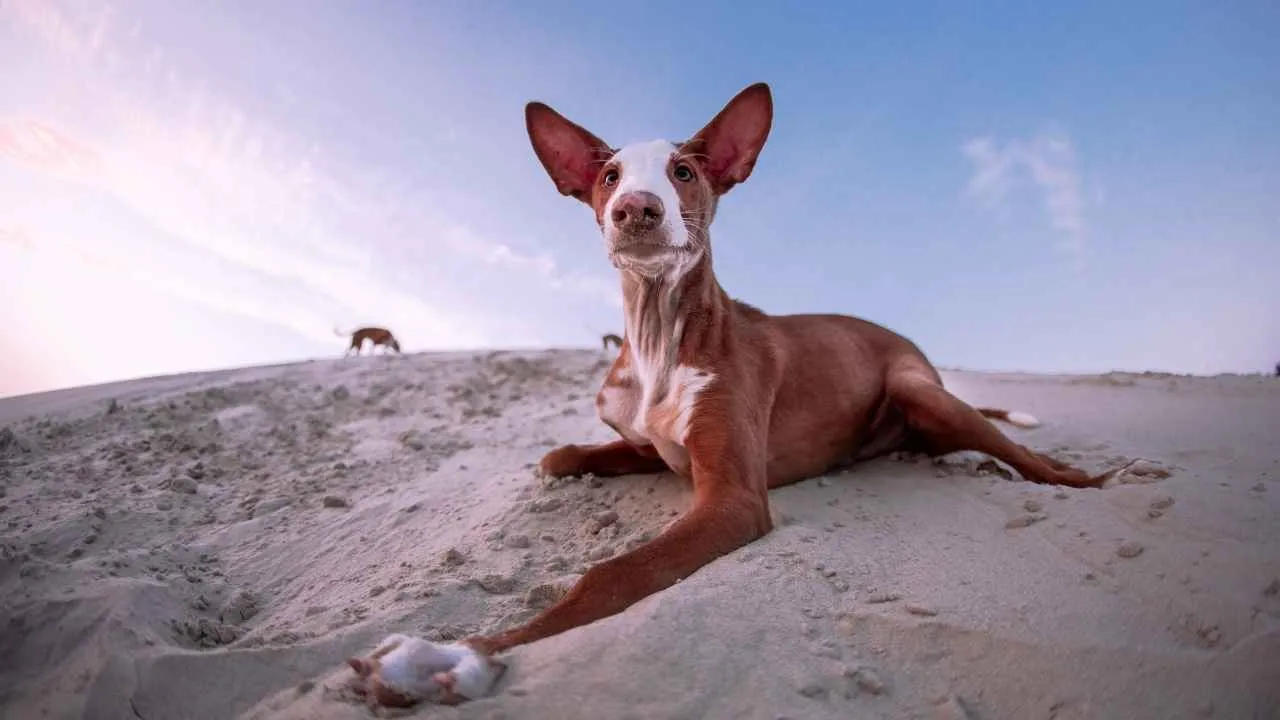
From the sun-kissed Balearic Islands of Spain, the Ibizan Hound was bred to hunt under blazing Mediterranean skies. This ancient sighthound’s slender body and short coat make it an effortless survivor in warm climates.
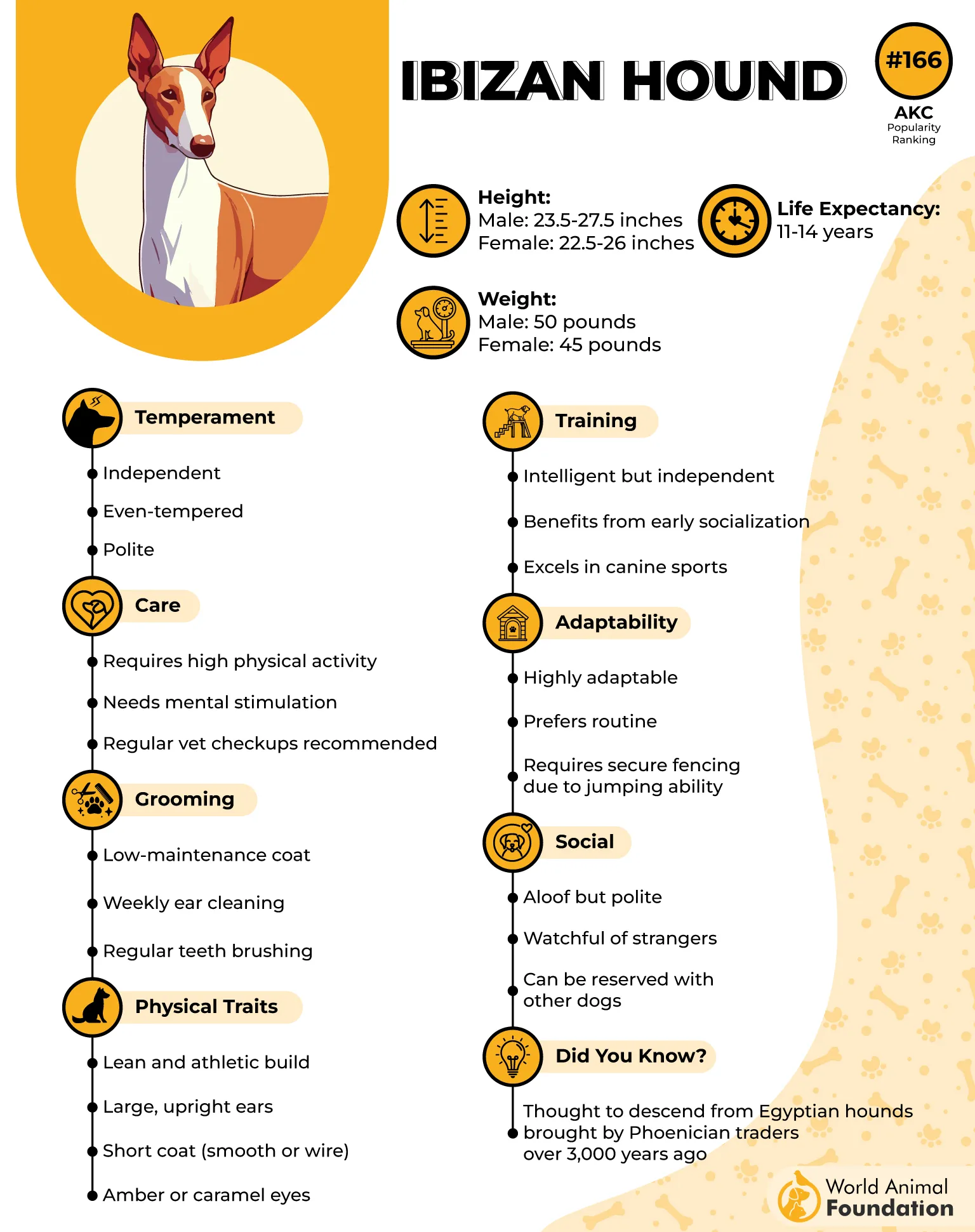
Descended from Mediterranean hunting dogs accustomed to dry, hot climates.
Short, fine coat offers minimal insulation and easy heat release.
A tall, slender body with long legs maximizes surface area for cooling.
Large, upright ears increase airflow and act as natural radiators for heat escape.
Naturally calm indoors, conserving energy during the hottest parts of the day.
With its elegant frame, tall ears, and amber eyes, the Ibizan is as graceful as it is alert. It’s a gentle protector — watchful without aggression — and forms deep emotional bonds with family.
Care & Health Tips for Warm Regions:
Protect ears and nose from sunburn with dog-safe balms.
Provide lightweight bedding to prevent overheating.
Offer frequent water breaks during playtime.
Known for agility and quick learning, Ibizans thrive when given space to sprint and explore. Their intelligence blends with sensitivity, making positive reinforcement their training sweet spot.
5. Whippet
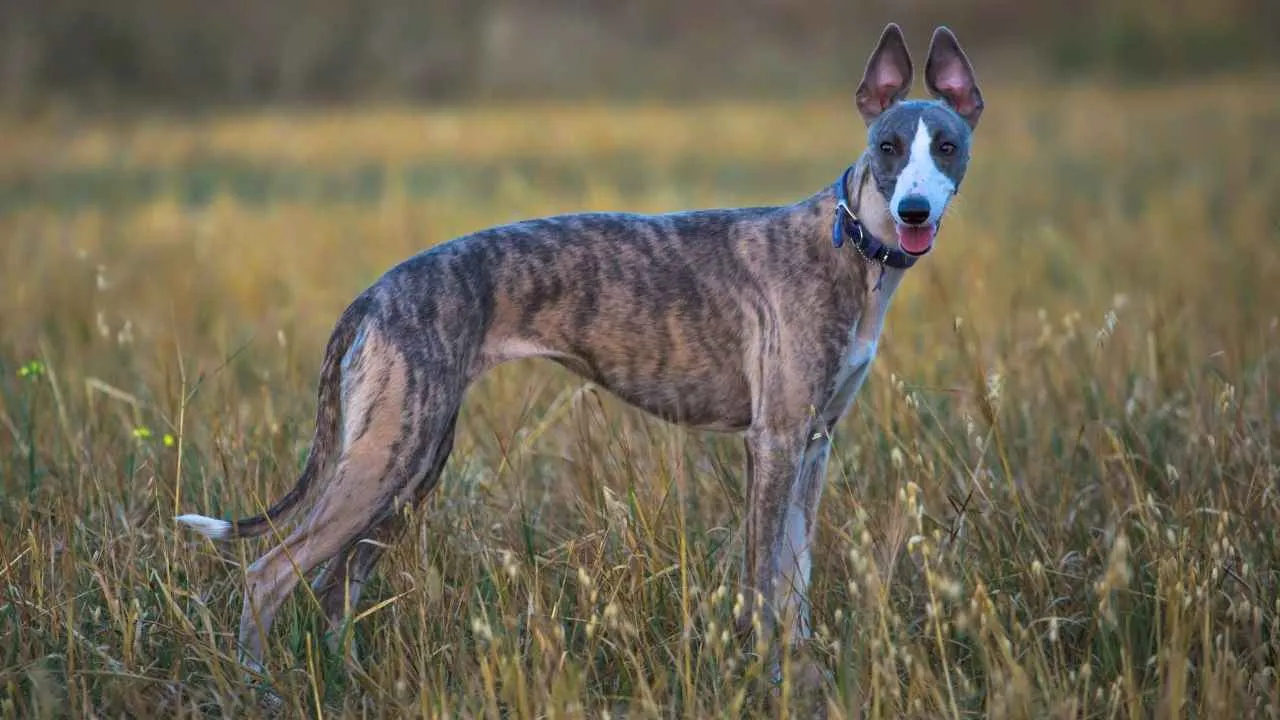
Sleek and swift, the Whippet’s origins in England’s warmer counties made it an expert at handling heat. Its ultra-fine coat and lean physique allow it to stay cool and comfortable even on summer days.
Originates from milder English climates but is highly adaptable to warm regions due to its body type.
Ultra-thin coat prevents heat buildup while allowing quick body cooling.
Streamlined, low-fat body dissipates heat faster than bulkier breeds.
Alternates short sprints with long rest periods, reducing the risk of overheating.
Prefers soft, shaded resting spots — instinctively avoids prolonged sun exposure.
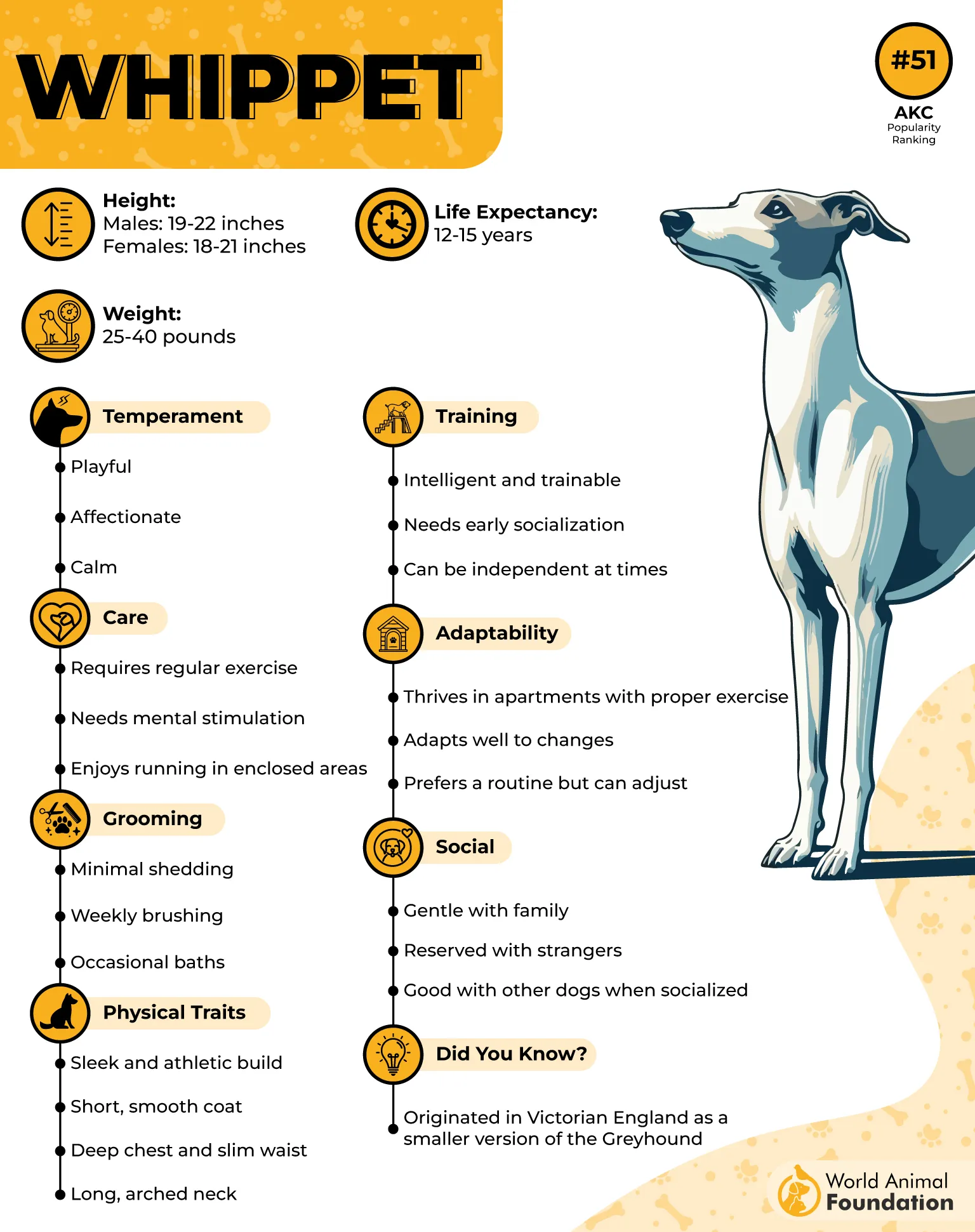
The Whippet is a study in calm confidence — gentle indoors, lightning-fast outdoors. Behind its quiet demeanor lies a vigilant heart, loyal to its people and alert to anything unusual.
Care & Health Tips for Warm Regions:
Avoid sun exposure during peak hours.
Use cooling mats post-exercise.
Protect from sudden temperature changes.
Energetic yet easygoing, Whippets love short bursts of speed and long stretches of relaxation. They respond beautifully to gentle, consistent training that balances play and praise.
6. Dalmatian
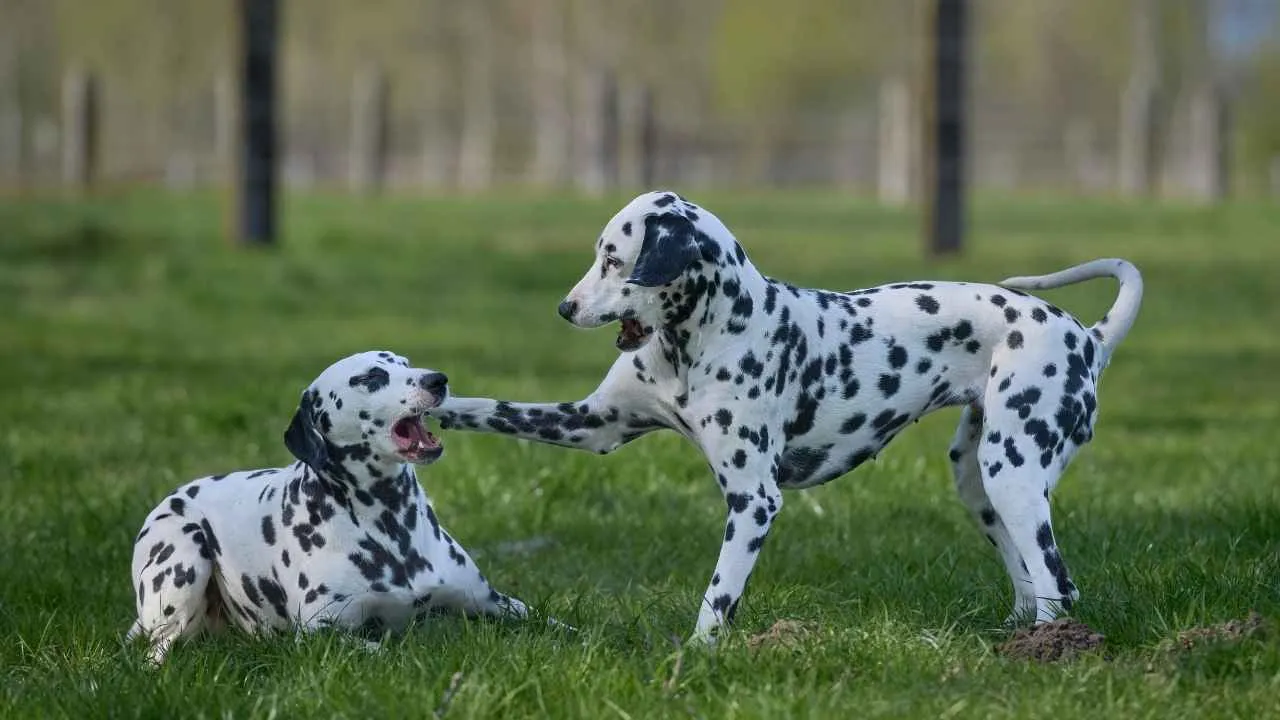
Once galloping beside fire carriages in the heat of the day, the Dalmatian is no stranger to sun and motion. With origins reaching ancient Croatia and India, its short coat and muscular frame make it a strong fit for warm regions.
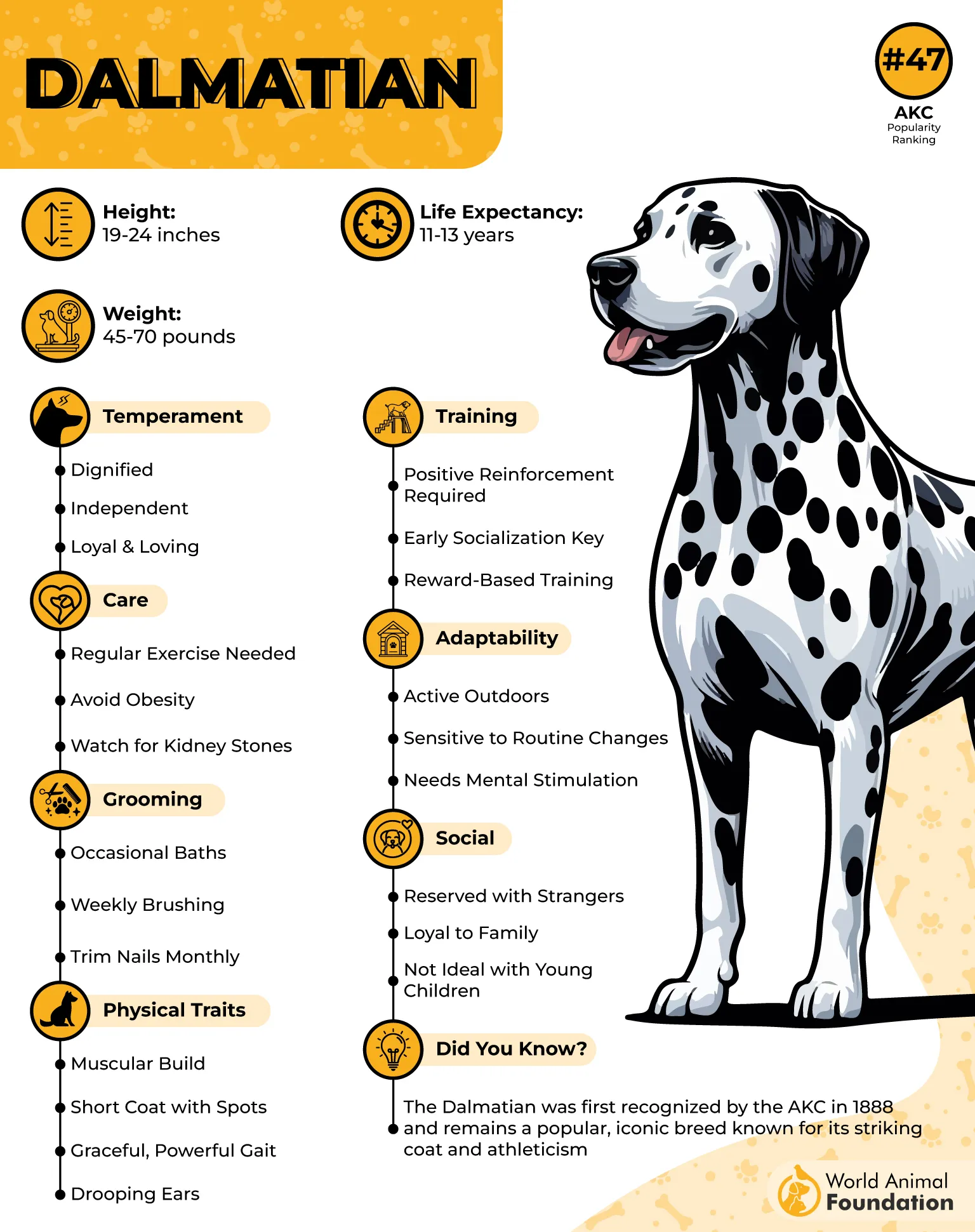
Historically, they worked beside horse-drawn carriages in the heat, developing strong heat resistance.
Short, spotted coat aids air circulation and keeps the body cool in sunlight.
Light coat color reflects heat effectively, preventing overheating.
Energetic yet intelligent, often self-paces and seeks shade after bursts of activity.
Naturally lean and muscular, helping with faster cooling and endurance.
Those iconic spots decorate a dog built for endurance and intelligence. Dalmatians are lively, watchful, and naturally protective — a perfect mix of energy and charm that keeps both hearts and homes safe.
Care & Health Tips for Warm Regions:
Maintain hydration to prevent heat exhaustion.
Provide shaded rest after outdoor activities.
Monitor for sunburn on light coat areas.
Bursting with enthusiasm, Dalmatians excel in activities like jogging or agility. They’re quick learners who thrive on routine and love training that feels like teamwork.
7. Doberman Pinscher
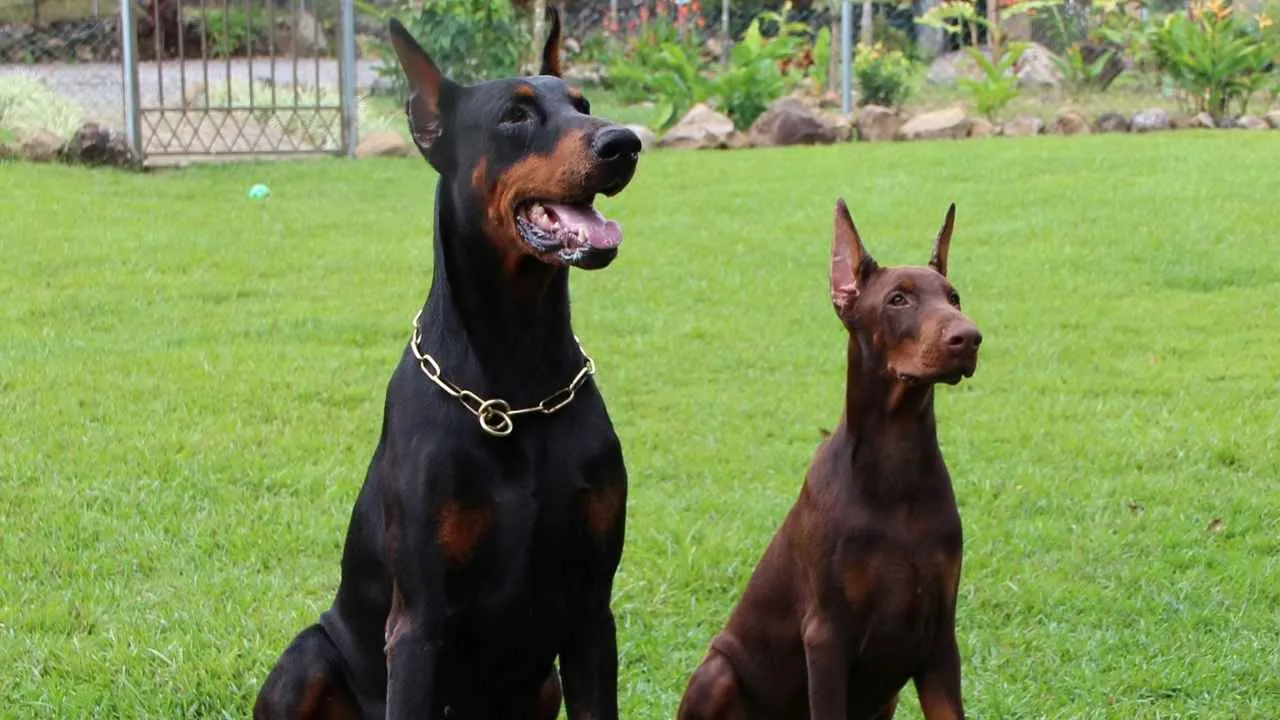
Forged in 19th-century Germany by Louis Dobermann, this breed combines intelligence, courage, and sleek elegance. The Doberman’s short, smooth coat helps it stay cool while guarding loyally in hot environments.
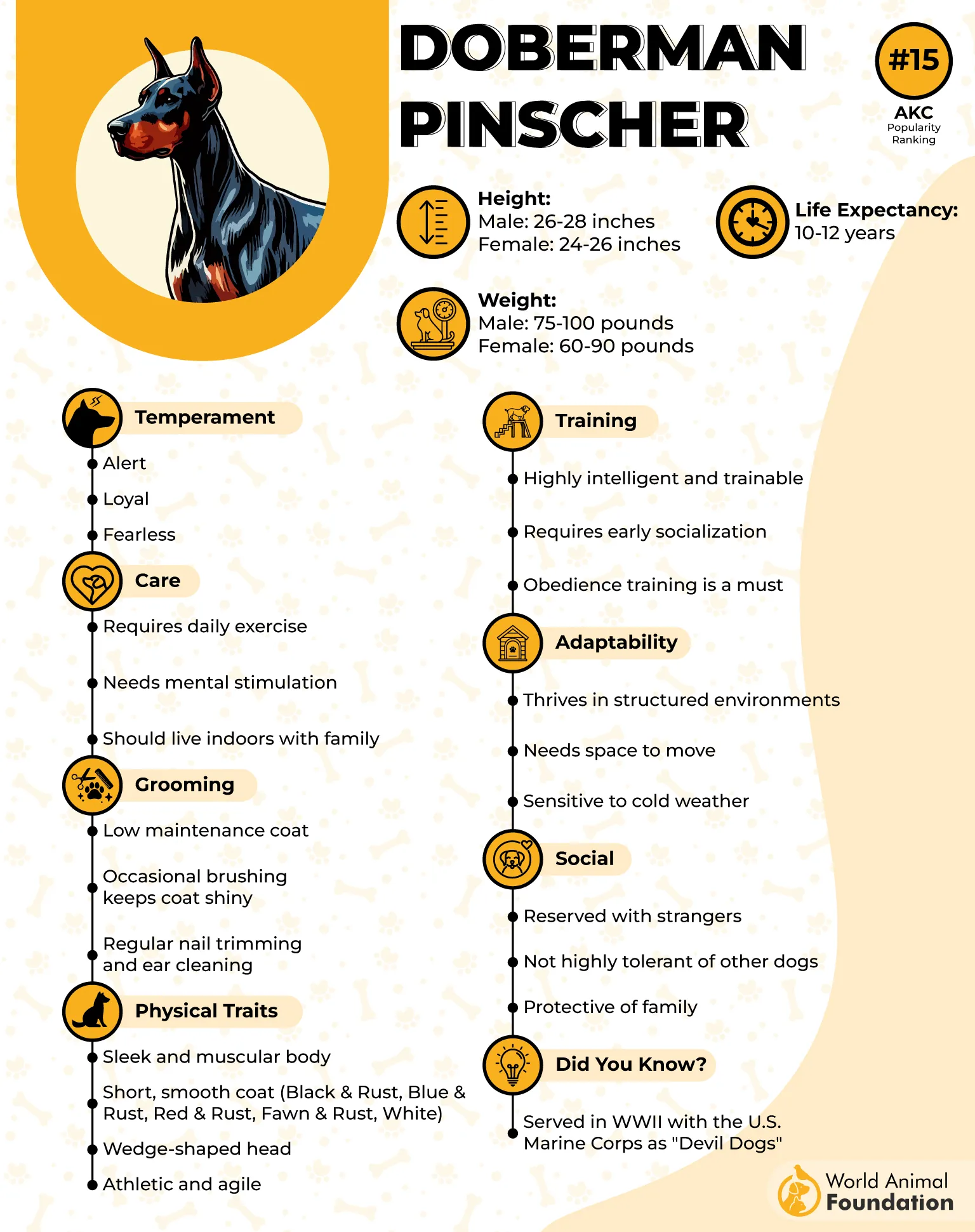
Sleek, single-layer coat allows for maximum heat dissipation in hot and humid climates.
A muscular build without excessive body fat prevents heat retention.
Typically dark-coated, but high circulatory efficiency aids temperature control.
Alert and intelligent, this breed adjusts activity levels intuitively to avoid overheating.
Enjoys ample exercise in cooler times of day and responds well to mental stimulation indoors.
Athletic and noble, the Doberman radiates power and poise. Beneath its commanding stance lies an affectionate, family-oriented heart. Its alertness and intuition make it one of the most dependable protectors in the canine world.
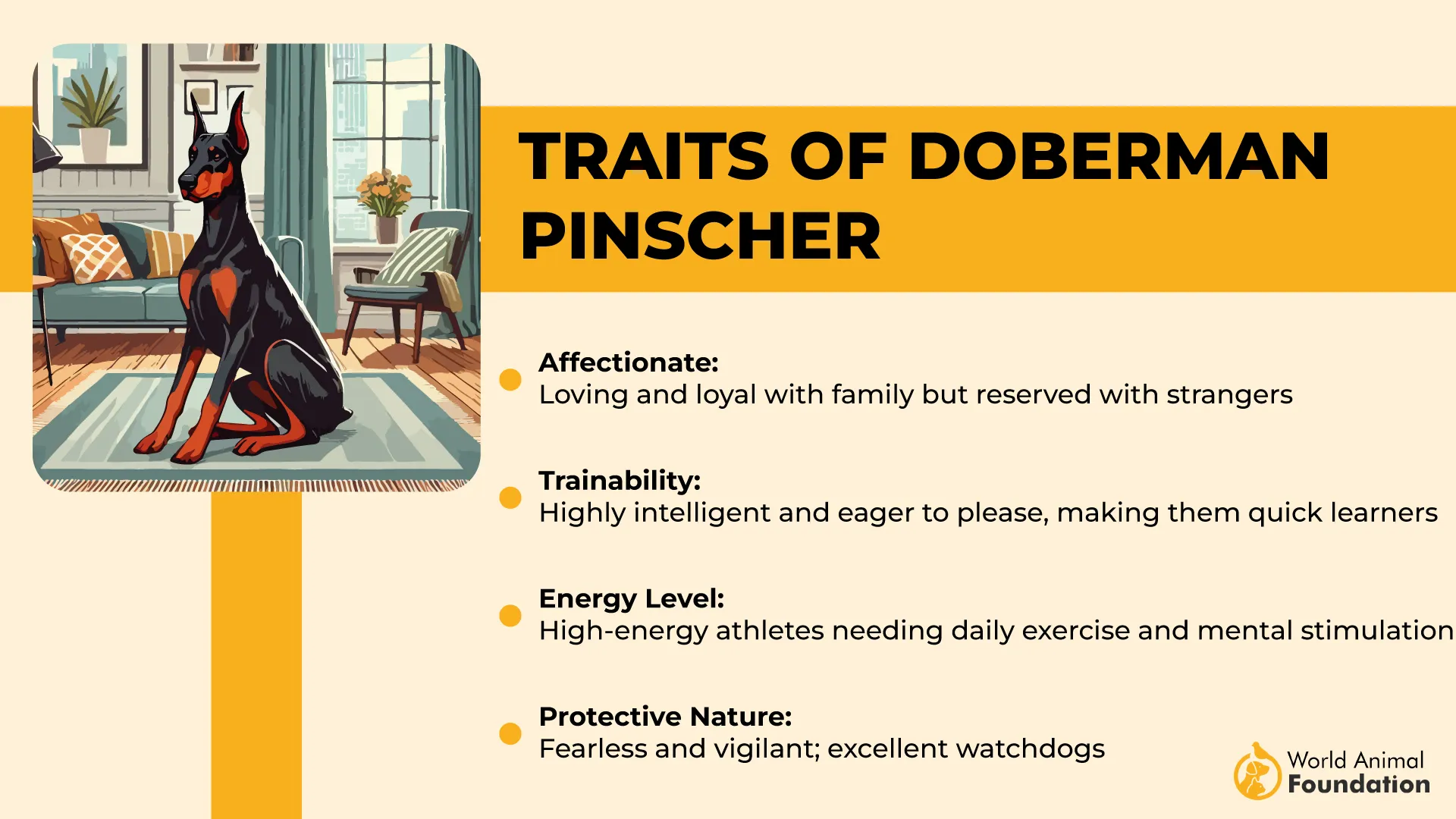
Care & Health Tips for Warm Regions:
Offer shaded exercise spaces.
Keep water readily available during training.
Regularly check paws for hot-surface burns.
High-energy and highly intelligent, Dobermans crave purpose. With structured training, mental challenges, and steady leadership, they evolve into remarkable, heat-tolerant companions — graceful defenders of their sunny domains.
FAQs
1. Do short-haired dogs make better guards in warm weather?
Yes — short-haired dogs generally have better heat tolerance because their coats don’t trap heat. Breeds with lean bodies and long snouts, like the Doberman or Vizsla, allow for better heat dissipation, making them more comfortable and alert in hot regions.
2. Are guard dogs active during the day in hot areas?
Most hot-weather dog breeds are naturally cautious about high temperatures. They tend to be more active during cooler mornings or evenings, conserving energy when the sun is strongest. Regular moderate exercise during cooler hours helps them stay fit without overheating.
3. What care do guard dogs need in tropical climates?
In a hot and humid climate, provide fresh water, shade, and dog-friendly sunscreen for light-coated breeds. Avoid prolonged exposure to heat, schedule regular vet check-ups, and maintain mental stimulation with low-impact activities. Proper care ensures your dog’s protective nature stays strong and healthy year-round.
Conclusion
Choosing the right dog breed for hot regions means finding one with true heat tolerance and the ability to comfortably handle a hot and humid climate. Breeds like the Rhodesian Ridgeback from southern Africa or the Afghan Hound from the Middle East were originally bred to thrive where temperatures rise.
Their lean bodies, long snouts, and robust build help with heat dissipation, making them well-suited for various climates. With fresh water, moderate exercise, and regular vet check-ups, they stay healthy even in high temperatures.
Give them mental stimulation, proper care, and love — and these excellent guard dogs will reward you with loyalty, protection, and an affectionate nature that shines under the sun.


